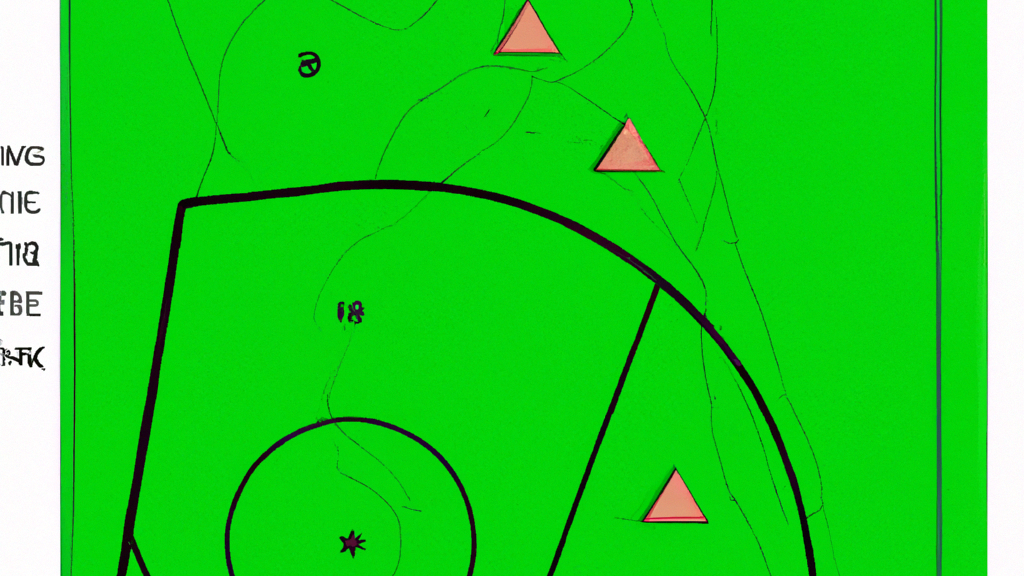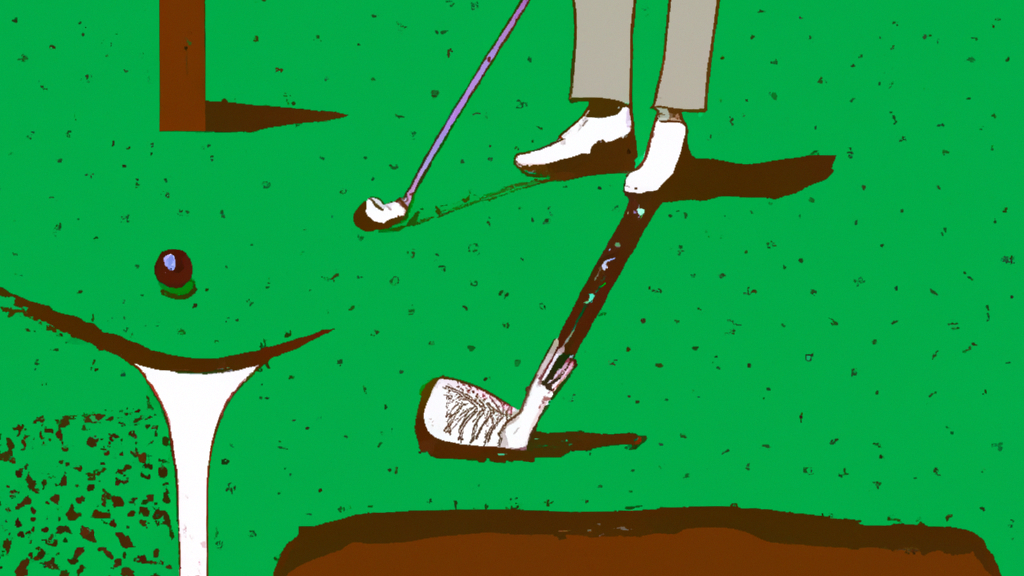THE ART OF GOLF COURSE MAINTENANCE: TECHNIQUES FOR KEEPING GREENS IN TOP CONDITION
Golf is a sport that requires precision, skill, and patience. But, did you know that the condition of the golf course can also affect your game? The greens, in particular, play a crucial role in the overall experience of playing golf. That’s why golf course maintenance is an art that requires expertise and dedication. In this article, we’ll explore the techniques for keeping greens in top condition, from mowing and watering to fertilizing and aerating.
Whether you’re a golf enthusiast, a country club member, or a professional golfer, understanding the art of golf course maintenance can help you appreciate the beauty of the game even more. So, let’s dive in and discover the secrets of keeping greens in pristine condition.

Golf Course Maintenance: Techniques for Keeping Greens in Top Condition
Golf is a sport that requires precision, skill, and patience. It is a game that is played on a course that is meticulously maintained to ensure that the greens are in top condition. The art of golf course maintenance is a complex process that requires a lot of knowledge, skill, and experience. In this article, we will discuss the techniques that are used to keep greens in top condition.
1. Ensure Healthy Grass
The first step in maintaining a golf course is to ensure that the grass is healthy. This requires regular watering, fertilization, and mowing. The grass on the greens is usually cut to a height of around 3mm, which is shorter than the grass on the rest of the course. This is because the ball needs to roll smoothly on the greens, and longer grass can interfere with this.
2. Proper Aeration
One of the most important aspects of maintaining greens is to ensure that they are properly aerated. Aerating the greens involves creating small holes in the soil to allow air, water, and nutrients to penetrate the roots of the grass. This helps to promote healthy growth and prevents the soil from becoming compacted. There are several methods of aerating greens, including using a hollow tine aerator, a solid tine aerator, or a spiking machine.
3. Proper Irrigation
Another important aspect of maintaining greens is to ensure that they are properly irrigated. This involves providing the right amount of water at the right time to ensure that the grass remains healthy. Overwatering can lead to the growth of fungus and other diseases, while under-watering can cause the grass to dry out and die. The amount of water required will depend on the climate, the type of grass, and the soil conditions.
4. Fertilization
Fertilization is also an important aspect of maintaining greens. Fertilizers provide the nutrients that the grass needs to grow and remain healthy. The type of fertilizer used will depend on the type of grass and the soil conditions. It is important to apply the fertilizer at the right time and in the right amount to avoid over-fertilization, which can lead to the growth of weeds and other unwanted plants.
5. Regular Mowing
Mowing is another important aspect of maintaining greens. The grass on the greens needs to be cut regularly to ensure that it remains at the right height. This helps to promote healthy growth and prevents the grass from becoming too long and interfering with the ball’s roll. The frequency of mowing will depend on the type of grass and the weather conditions.
In addition to these techniques, there are several other factors that can affect the condition of greens. These include the weather, the amount of foot traffic, and the use of chemicals. Extreme weather conditions, such as drought or heavy rain, can have a significant impact on the health of the grass. Foot traffic can also cause damage to the greens, which can lead to the growth of weeds and other unwanted plants. The use of chemicals, such as pesticides and herbicides, can also have an impact on the health of the grass and should be used sparingly.
In conclusion, the art of golf course maintenance is a complex process that requires a lot of knowledge, skill, and experience. Maintaining greens involves a range of techniques, including aerating, irrigating, fertilizing, and mowing. It is important to ensure that the grass remains healthy and that the greens are properly maintained to ensure that golfers can enjoy the game to the fullest. By following these techniques, golf course managers can ensure that their greens are in top condition and that golfers can enjoy the game for years to come.

- Keeping Greens Green and More Tips from a Golf Course …
Feb 26, 2018 … Atkinson Resort is a state of the art facility, home to excellent playing conditions, superior service and superb dining options. - Golf course maintenance and management guide
Greenkeepers must carefully maintain the condition of the course for golfers to enjoy their game and the natural beauty of the greens. The key to maintaining a … - Golf Course Lawn Maintenance Tips – TWL Irrigation
Aug 25, 2020 … Depending on how often the course is used, repairs should be scheduled to keep the greens and other areas in good condition. Scheduling. - 5 Best Benefits of Municipal Golf Course Maintenance Services …
Cleaning and Maintaining Greens · Keeping the Course in Good Condition · Repairing Hazards on the Course · Fertilizing and Mowing the Course · Winterization of the … - Golf Course Maintenance: A Beginner’s Guide to Streamlining O&M
Oct 5, 2022 … Fast putting greens allow balls to roll freely. Slopes, or gradients, allow for challenging levels of play. The USGA recommends maintaining … - Golf Course Solutions (@golfcoursesolutions) • Instagram photos …
Delivering complete golf course management solutions. … Dew removal – another sustainable task ensuring we are keeping our greens in top condition! - Greenkeeping 101: Inside the Life of a Greenskeeper – The Left Rough
Maintaining the putting and chipping greens. This is important because golfers want a putting green that matches the speed of the greens on the golf course. - Tips for Maintaining Your Golf Course – foreUP
Golfers say noise from mowers and slow play due to maintenance can ruin their game. Here are some of the best tips for keeping your course in top condition … - Mowing And Rolling Greens To Manage Green Speed And Turf …
Aug 2, 2019 … Promotes smooth surface conditions; Allows for raising the cutting height while maintaining green speed; Aids with the incorporation of sand … - Golf Course Maintenance Guide: Essential Tips and Checklist –
This Golf Course Maintenance Guide is designed to provide you with practical and actionable tips for keeping your course in good condition. From greens to …
Fascinating facts about The Art of Golf Course Maintenance: Techniques for Keeping Greens in Top Condition you never knew
- The earliest known game similar to golf was played in the Netherlands during the 13th century, where players hit a leather ball with a stick towards a target several hundred yards away.
- Golf as we know it today originated in Scotland during the 15th century, where it was played on rough terrain using handmade clubs and balls made of wood or leather stuffed with feathers.
- The first recorded golf tournament took place at Leith Links near Edinburgh in 1744, and featured only one hole that measured around 500 yards long.
- In the early days of golf, courses were maintained by grazing sheep or cattle who kept the grass short and even – this practice continued until well into the 19th century!
- The first professional golfer was Allan Robertson from St Andrews in Scotland – he made his living by making clubs for other players as well as playing matches for money against wealthy patrons.
- Golf became popular among American elites during the late 19th century thanks to figures like President William Howard Taft and financier J.P Morgan who helped establish exclusive country clubs across America’s East Coast.
- One of America’s most famous country clubs is Augusta National Golf Club which hosts The Masters Tournament every year – founded by Bobby Jones and Clifford Roberts in Georgia back in1933





